Once framing was complete, we were ready to run our electrical wires. In most remodeling projects (whether it’s a smaller kitchen or bath remodel or full house rehab), the electrical work is done in two phases: The first phase, often referred to as “rough-ins”, involves disconnecting and removing obsolete wiring, and running new. Wire is run from the main breaker panel through wall framing and ceiling and floor joists.
At Fairmont, we were fortunate that we were not required to perform a “heavy-up”, which is often necessary when remodeling an older house. A heavy-up involves increasing the amperage (generally to 200 amps) coming into your house, which enables your electrical system to support additional electrical circuits needed to power devices such as kitchen appliances, computers, hairdryers, televisions, specialty lighting, etcetera. Many of these modern conveniences were not available when the initial electrical infrastructure was installed, thus, a 100 amp service was sufficient at that time. Since the house at Fairmont is split into two units, we have a 150 amp feed coming into a breaker panel on both levels, each on separate electrical meters.
As with the framing, the initial layout can be the most arduous part of the rough-in process. Every outlet, lighting fixture, kitchen appliance, and washer and dryer has a precise location determined by the designer’s layout scheme, and specified in the electrical plans. Any deviation from these specifications can cause problems down the road. For instance, if the 220 volt plug for the convection oven in the kitchen is installed even an inch from its dedicated location, it could be blocked by surrounding cabinetry.
Once the location of every light, outlet and appliance had been marked out the electricians were ready to begin pulling wires. Using fast boring bits and fish-tape, our electricians ran wires through the wall framing and floor joists to all the correct locations. Being that the house is relatively large, and that wiring was being completely redone on both floors, it took a crew of four electricians five days to complete the rough-ins. This also involved installing outlet boxes and recessed light cans, but trim and cover plates are left off until final hookups.
-
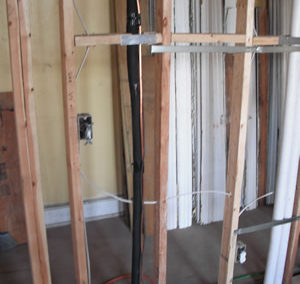
Wiring Running Through Wall Studs, Second Floor
-
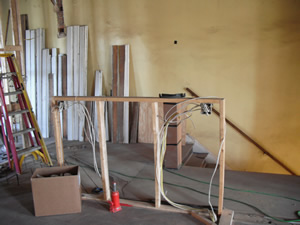
Roughed-in Outlets For Second Floor Kitchen Island
-
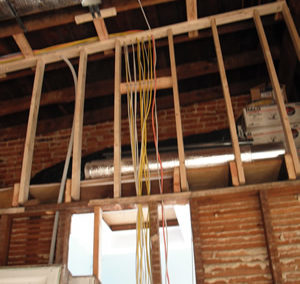
Wiring Running Into Ceiling From Second Floor Breaker Panel
-
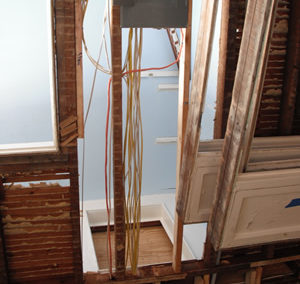
Main Breaker Panel, Second Floor
-
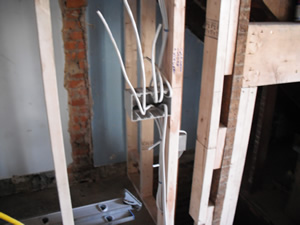
Roughed-in Outlet Outside First Floor Powder Room
-
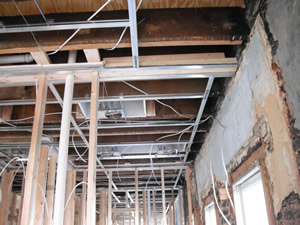
First Floor Wiring
-
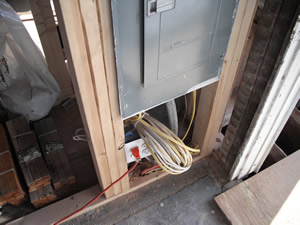
Main Breaker Panel, First Floor
-
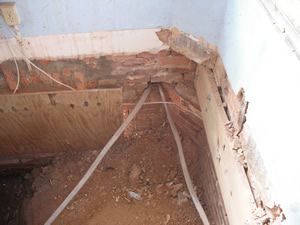
Main Power Supply Lines Coming Into House Through Crawlspace